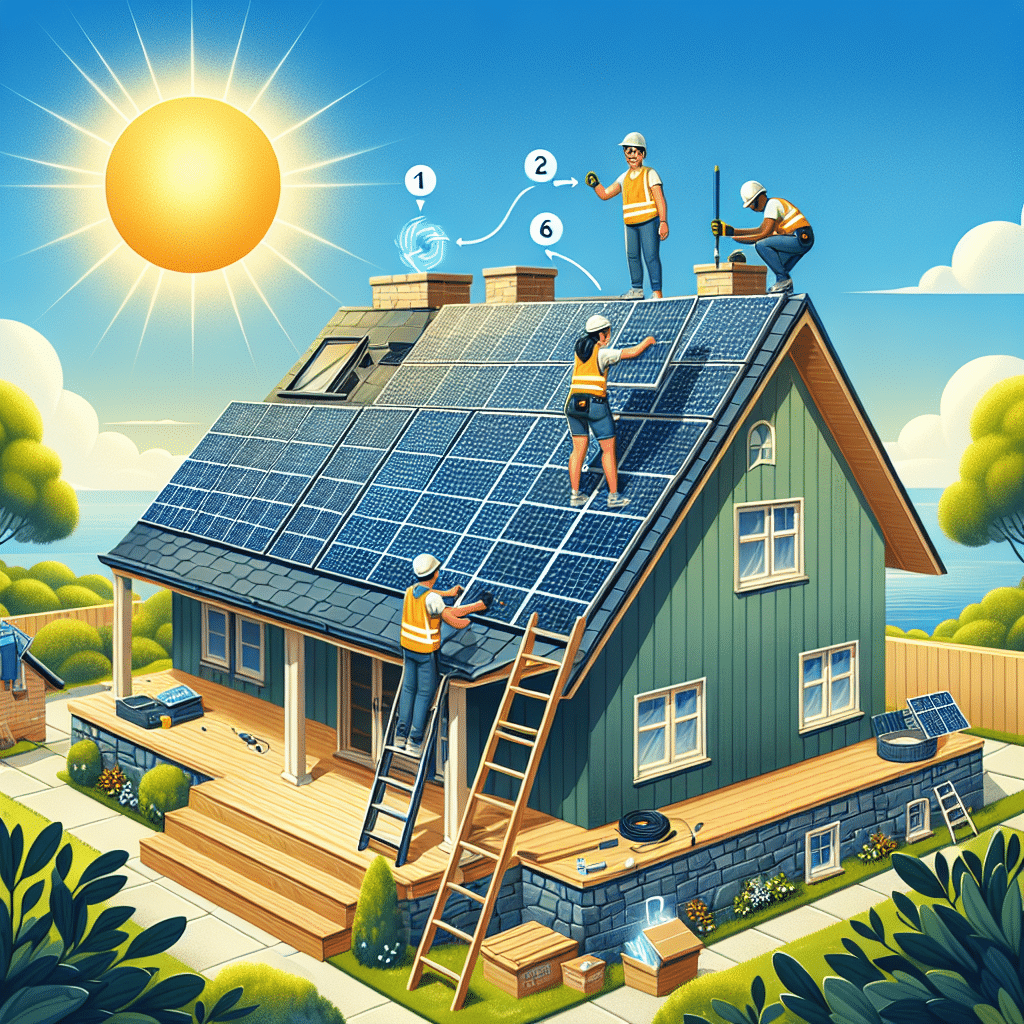Understanding Solar Energy: The Basics
Solar panels convert sunlight into usable electricity, harnessing photovoltaic (PV) technology. Homeowners can tap into this renewable energy source to reduce electricity bills and carbon footprints.
Types of Solar Panels
-
Monocrystalline Solar Panels:
- High efficiency (15-22%).
- Long lifespan (25+ years).
- Made from a single crystal structure, offering space efficiency.
-
Polycrystalline Solar Panels:
- Slightly lower efficiency (13-16%).
- Typically less expensive.
- Made from multiple silicon crystals, resulting in a bluish hue.
-
Thin-Film Solar Panels:
- Flexible and lightweight.
- Lower efficiency (10-12%).
- Ideal for unique applications or shading conditions.
Assessing Solar Potential
Roof Orientation and Tilt
- South-facing roofs capture the most sunlight.
- An angle of 30-45 degrees is optimal for maximum energy production.
- Use solar calculators to assess shading from trees and structures.
Solar Insulation
Solar insolation, measured in kWh/m²/day, determines energy yield. Utilize tools like the Photovoltaic Geographical Information System (PVGIS) to evaluate local insolation data.
Financial Considerations
Initial Costs
The average cost of installation ranges from $15,000 to $25,000 for a typical residential system. Costs vary based on:
- System size (kW output).
- Type of solar panels.
- Installation complexity.
Incentives and Rebates
- Federal Solar Tax Credit: Currently, homeowners can claim 26% of installation costs on federal taxes.
- State and Local Incentives: Explore unique programs in your area, including renewable energy credits (RECs) and local utility rebates.
Step-by-Step Installation Guide
1. Obtain Necessary Permits
Check local building codes and regulations. Most regions require permits for solar installation. Obtain permits and inspections through local government channels.
2. Choose an Installer
Research local solar installers, read reviews, and request quotes. Verify their experience, licensing, and insurance. Request a site assessment for an accurate estimate.
3. System Design
Upon selection of an installer, the next step is system design, which includes:
- Panel Placement: Determine optimal locations on the roof.
- Inverter Selection: Choose between string inverters, microinverters, or power optimizers based on system needs.
4. Prepare for Installation
Prepare your home by ensuring:
- Clear access to the installation site.
- Necessary structural renovations, such as reinforcing the roof.
5. Solar Panel Installation
- During installation, the installer will:
- Secure the racking system to the roof.
- Mount solar panels.
- Connect wiring between panels and the inverter.
6. Electrical Connections
Once panels are installed:
- Connect the inverter to your home’s electrical panel.
- Ensure that the installation meets National Electric Code (NEC) standards.
7. Inspection and Interconnection
After installation:
- Schedule an inspection with local authorities.
- Once passed, the utility company will install a new meter, enabling grid interconnection.
Maintenance Tips for Solar Panels
- Regular Cleaning: Dirty panels can reduce efficiency. Clean with water and a soft brush; avoid harsh chemicals.
- Watch for Shading: Trim nearby trees or shrubs that may obstruct sun exposure.
- Professional Inspections: Annual inspections by a solar technician can catch potential issues early.
Monitoring Solar Performance
Install a monitoring system to track energy production. Most inverters come with integrated monitoring, providing real-time data on performance and efficiency.
Common Solar Panel Myths
-
Solar Panels Don’t Work in Cloudy Weather:
- Solar panels can generate electricity on cloudy days; efficiency drops but isn’t eliminated.
-
Solar Panels Require Too Much Maintenance:
- They require minimal maintenance—mostly cleaning and occasional inspections.
-
Solar Energy is Too Expensive:
- With declining costs and available incentives, solar is now more affordable than ever.
Environmental Impact
Switching to solar power significantly reduces greenhouse gas emissions. It lowers reliance on fossil fuels and promotes sustainable energy production. Homeowners contribute to global efforts in combating climate change.
Closing the Energy Gap
By installing solar panels, homeowners not only save on their electric bills but ultimately reduce their environmental impact. As the technology continues to evolve, the balance sheets of savings versus initial investments will favor solar increasingly in the future.
Additional Resources
- Visit the Solar Energy Industries Association (SEIA) for updated statistics and trends.
- Utilize EnergySage for competitive quotes and installer reviews.
- Explore Database of State Incentives for Renewables & Efficiency (DSIRE) for local incentives.
This comprehensive guide equips homeowners with all the necessary knowledge to navigate the solar installation process effectively, ensuring a smooth transition to renewable energy while maximizing financial benefits and environmental impact.
